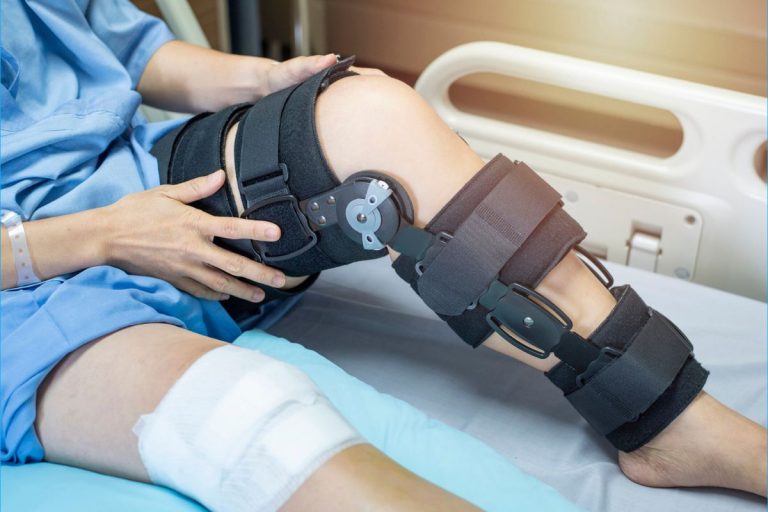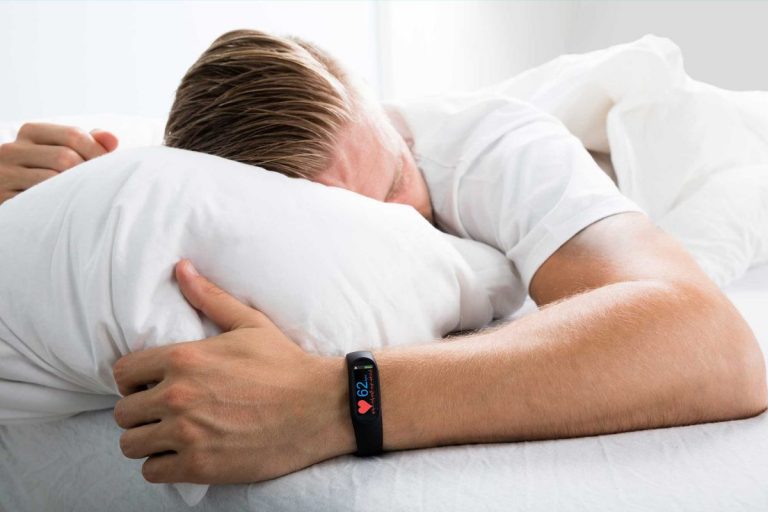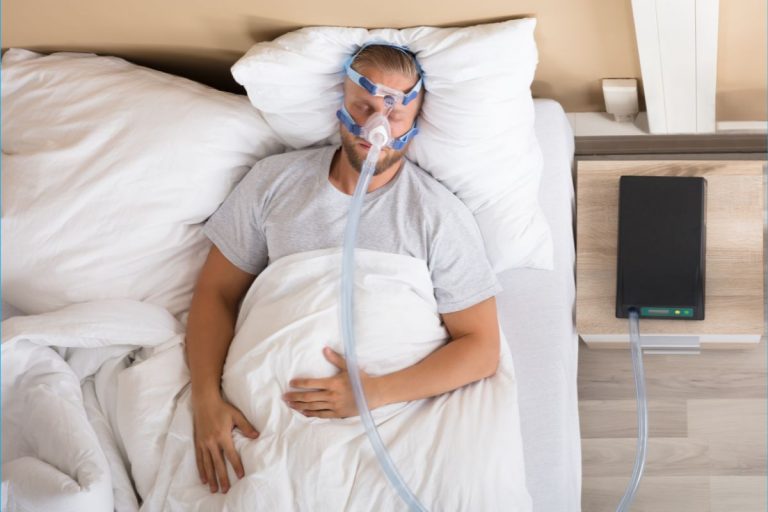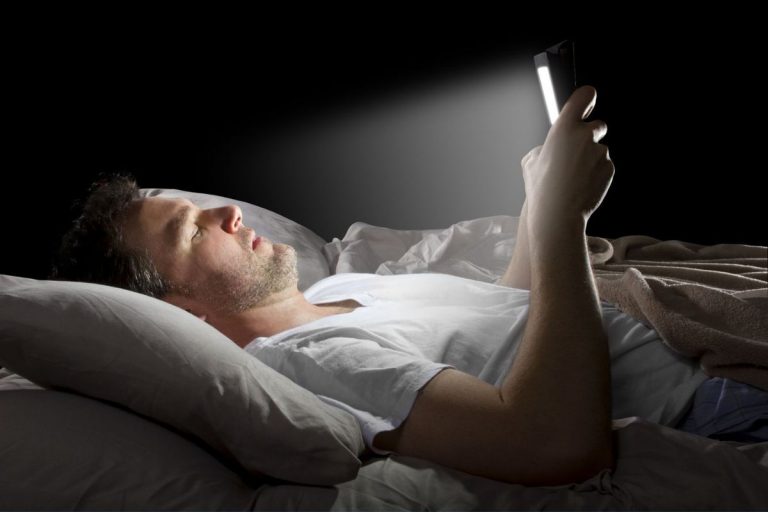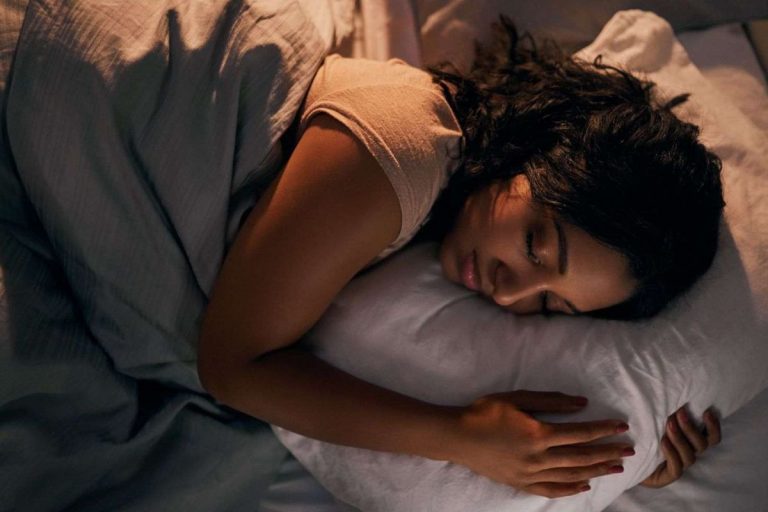If you are suffering from a temporary setback falling asleep, there’s nothing to worry about. However, if you are struggling with insomnia or some other sleep disorder, you must’ve exhausted the ideas that will help you fall asleep easier. A lot of people and well-educated researchers alike praise the benefits of sleeping under the red light.
We know that infrared and red light therapy is beneficial for our health, but does the same apply to our sleep habits? A lot of people believe that sleeping under any kind of light including the optically visible light and UV light is bad, and that can’t be far from true. However, these beliefs persist even with the red light.
Although having a source of red light in your bedroom is highly unlikely unless you read somewhere that you should have it, this article will tell you whether it’s a good idea to continue sleeping with red light in your bedroom and whether you should invest in red light in the first place.
That being said, continue reading this article to learn about the potential risks of sleeping with red lights on, but also the benefits that come with this practice.
It’s no secret that leading busy lifestyles full of hustle and living in the noisy streets and neighborhoods can contribute to a poor sleeping lifestyle. A lot of people struggle with sleep, developing sleep disorders such as insomnia, as well as anxiety and panic attacks due to the never-ending obligations they have to attend to.
We already know that light is one of the biggest environmental influences on our circadian rhythm, otherwise known as our body clock. Thanks to light our body clock tells us when it’s time to sleep and when to wake up. During the night, blacking out the room contributes to the release of melatonin a neurotransmitter that tells us that it’s time to sleep.
In contrast in the morning, as the first sun rays are breaking through your windows and curtains, your brain will release cortisol which will suppress the melatonin and tell your clock that it’s time to wake up. The sunlight consists of different types of lights. That light has different wavelengths which are measured in nanometers.
Purple and blue light has the shortest wavelengths but the highest frequencies which is exactly what’s responsible for keeping you up at the night. Additionally, the blue lights from the monitors can disrupt your attention and keep you more awake during the night.
That’s exactly why so many health experts recommend having Blue light filter glasses or avoiding electronics 30 minutes to 1 hour before sleep. On the contrary, red light has quite a short frequency, but quite a long wavelength.
Is It Bad to Sleep With Red Light On?
With so many problems to fall asleep, many people resort to red light therapy, which helps treat chronic skin conditions. That’s why a lot of people try to test it for sleep. Logically, if blue light can make you feel awake at night, the red light can have the opposite effect.
That’s exactly what it is, but it doesn’t work exactly that way. A lot of astronomers and even the workers at submarines refer to infrared or red light bulbs to get better sleep effects and have an easier time falling asleep. They can also make you sleep longer, which is especially good for people who have a problem with waking up early.
That being said, there’s nothing wrong with sleeping with a red light on. The biggest challenge is finding it and getting used to it. You should avoid bright lightbulbs or lights with a blue or purple tint. Instead, you should focus on red lightbulbs, infrared lights, and LED lightbulbs with red color.
The first thing that you should know is that the wavelength of red light is about 670nm. This is the wavelength commonly used in red light therapy which is used to treat skin conditions and others, as mentioned earlier.
We believe that there are other values of wavelengths that you can resort to, as long as they are staying in the range of red light. For example, you should avoid wavelengths from 450 and 500nm because that’s considered the blue light in the range usually present in electronic devices like phones, laptops, tablets, TVs, monitors, and others.
If you stick with the light that falls in the range we mentioned above that is suitable for a red light and up to 780nm it’s likely that you’ll experience rejuvenation in terms of red light therapy. It is going to make you sleepy, and it’ll help you get rid of that drowsy feeling in the morning.
However, for the most effective results, it’s important to remove the sources of light in other colors like visible light, purple and blue light. That means removing the electronic devices or using eye protection filters that are common on the newer devices.
That also means turning off the TV, and other sources of light, such as lamps, ceiling light, computers, as well as sources of light located in other rooms. That being said, that will help the red light become more prominent and assist you with sleeping.
Risks of Sleeping With Red Light
Scientists have been researching the red light and continue doing so as only a limited number of studies showed benefits, and they are usually conducted on a small group of people over the short period. Nevertheless, no risks were taken.
Red light has a very high wavelength and a small frequency, and for some people, it may appear intimidating. However, this should not be taken as a risk, but rather an inconvenience that you’ll get used to as you continue sleeping using the red light.
There are far more benefits to sleeping with a red light on. Even though those benefits continue to be researched, current evidence over a small number of researched entities yields great results, which is why you should try sleeping with a red light on and see whether it improves your overall sleep quality.
Benefits of Sleeping With Red Lights
Although there are no risky situations with sleeping at red lights, there are numerous benefits that you should explore. Let’s check them out!
Increases Sleep Quality
One of the most important benefits is that the red light will allow you to sleep better and relax. To some red light may signal danger, but for people who are struggling to sleep, it’s encouraging to know that the red light improves sleep quality and promotes deeper sleep stages which have rejuvenate and recovering properties.
One of the earliest studies that researched the sleep quality of sleeping with red light dates back to 2012. This study tested whether the improved sleep with red light will help athletes improve their performance. It was a small study that studied a portion of female athletes who slept after being exposed to 30 minutes of red light therapy.
Although this study was very limited in numbers, improved sleep quality and endurance were observed in the group of athletes who were exposed to the therapy. It’s known that quality sleep will improve your performance at work, school, or sport. Red light therapy reinforces that by improving the quality of your sleep.
Helps With Melatonin
The biggest number of studies looked at how red light therapy for sleep can improve the melatonin levels, fix the disrupted biological clock, and encourage people to sleep at the right time. Circadian rhythm is also another name for biological clock and light is one of the biggest factors that affect it.
Bright light such as the white light and ultra-violet light coming from the sun is exactly what makes us wake up and gives our biological clock the notice it’s time to release the cortisol and wake up time. In the same way, the absence of light, night in other words can help our body release melatonin and signal it that it’s time to bed.
Red light has a lower frequency than other colors which is why it encourages our brain to signal our body it’s time for bed with the release of melatonin. This is proved in various studies exploring red light therapy.
That being said, red light therapy can help your brain release melatonin, a chemical that will tell your body it’s time to sleep.
Also Read:
Improved Night Vision
Surprisingly, even some adults can’t fall asleep because they’re afraid of the dark. We know how important it is for our room to be dark for us to have an easier time falling asleep. However, some people are so afraid to be in the dark, that it causes sleep deprivation disorder on its own.
However, it has been shown that red light therapy can lead to improved night vision which swipes away the fears of the unknown in the dark for a lot of people. This therapy can be quite beneficial to people who are afraid of the dark, and the best part is that being surrounded by red light means they won’t be in the dark after all.
It Reduces Drowsiness
Having an improved sleep quality also means that you’ll be less likely to feel drowsy when you wake up, and that’s all thanks to the red light therapy. But that’s not all. Aside from improving the sleep quality of people who are exposed to it, red light therapy can help treat a condition known as sleep inertia.
A study showed that red light therapy applied over closed eyes in a moderate red-light environment helped reduce the level of drowsiness upon waking up. Sleep inertia can be a demotivating situation for people who struggle to get out of bed, after waking up, so red light therapy may help them eliminate this feeling of tiredness and drowsiness upon waking up.
Beneficial For Your Face
It’s no secret that there’s a high chance for wrinkles when we sleep. Stomach sleepers, more than anyone, grind their faces against their arms and pillow which can result in developing wrinkles before time. However, red light therapy is effective in preventing dead skin on the face, as well as helping remove it. Additionally, it can help with wrinkles which is why some people, women especially sleep with red lights on.
Also Read: What Color Light Helps You Sleep: Based On Scientific Research
